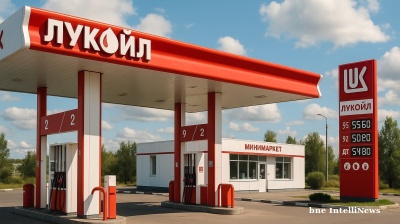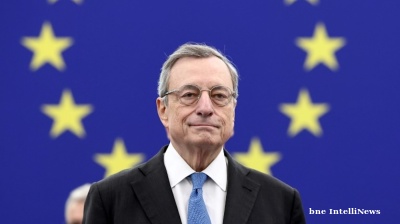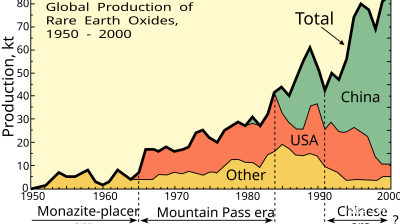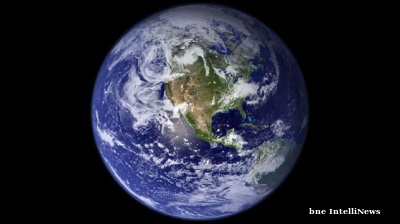The addition of the Kingdom of Saudi Arabia (KSA) to the BRICS+ at a summit on August 24 came as a surprise to many, but analysts say it will significantly increase the power of the group, with the addition of the UAE and Iran, as long as the BRICS+ countries now control a significant share of the world’s oil.
The BRICS+ group power is not what they have in common, which is very little; it’s what they control. Global oil production totalled around 90mn barrels per day in 2022. The BRICS+ countries produced around 37mn bpd of oil that year.
Before the summit the original BRICS members made up around 20% of global oil output, but the addition of KSA, the UAE and Iran means the share of the larger group has doubled to 42% of global crude oil output in 2022.

GLOBAL BRICS oil production vs rest of world: ING
The addition of Saudi Arabia to the BRICS+ seriously increases the BRICS power in the oil market. KSA is the largest crude oil exporter, shipping about 7.3m bpd in 2022, a little more than 17% of global crude oil exports, according to ING. Three-quarters (76%) of these exports go to Asia, of which 35% go to BRICS members China and India.
On top of this, the addition of Iran further increased the clout of BRICS.
Iran exported 2.2mn bpd of crude and condensates during the first 20 days of August, according to TankerTrackers.com, far exceeding any other month this year, and well above what other oil shipping analytics firms say.
Iran is also ramping up its oil exports to China, which surged to a 10-year high in the middle of August, as other past customers like South Korea and Japan steer clear of sanctioned barrels. China is expected to import as much as 1.5mn bpd of crude oil from Iran in August, the highest since 2013, data intelligence firm Kpler estimated.
Independent Chinese “teapot” refiners in Shandong Province have started buying increasing volumes of Iranian crude. According to Bloomberg, Iran's two main grades are currently trading at discounts of more than $10 a barrel to Brent, and are considerably cheaper than Russian blends, which is also discounted by about $4 now from the international Brent blend price.
"Despite severe financial restrictions, Iran managed to increase its crude oil production by about 140,000 bpd in 2022 to an average of 2.5mn bpd. It seems that Tehran has maintained its crude sales to China, which has been around 1mn bpd since the third quarter of last year," the IEA said in a recent report.
Russia has also seen its oil exports recover following the twin crude and oil product sanctions that came into force on December 5 and February 5, which are largely directed to India and China.
However, Russia’s oil trade with Brazil has also taken off recently as the intra-BRICS trade continues to flourish. In August, Russia overtook the US to become the biggest supplier of oil to Brazil, strengthening its position as a leading fuel exporter to the Latin American country since the EU and G7 embargo.
Exports to Brazil are set to surge by 25% in August compared to the previous month to around 235,000 bpd, Kpler data shows. Discounts are behind this surging trade too. The Brazilian government is struggling to reduce the cost of transport fuels and so plentiful cheap Russian oil has become a boon. Kpler estimates that buying Russian diesel has lowered Brazil’s imported prices of the fuel by $10 to $15 a barrel. Russia has also launched gasoline and naphtha exports to Brazil.
And the BRICS-driven oil trading boom is already starting to spill over into neighbouring markets. While Venezuela is not a BRICS+ country, although it would like to be, OPEC spotlighted a remarkable 10.65% surge in Venezuelan oil production from February to August of this year.
During this period, Venezuela's state-owned oil company, Petroleos de Venezuela (PDVSA), recorded an impressive average daily production increase of 78,000 barrels. From January to August, output saw a substantial climb, rising from 732,000 bpd of oil to 810,000 bpd.
In recent remarks, PDVSA president Tellechea stressed the urgency of re-establishing Venezuela as a reliable source of crude oil, advocating for the country to be relieved from sanctions. Increasingly Venezuela can also tap into the BRICS flows.
India, previously a big buyer of Iranian oil, has pivoted to taking more Russian barrels. Independent energy research and intel firm Rystad Energy said that India may be approaching the upper limit of its imports of Russian oil, but the share of Russian oil in its imports have risen from a mere 2% pre-war to about 46% now.
“News of this faster expansion – especially among the oil exporters – clearly adds some momentum to the de-dollarisation debate. We would reiterate, however, that energy only comprises 15% of global trade and that Saudi pricing oil exports to China and India in non-dollar currencies does not spell the end of the dollar as the international currency of choice,” says ING.
Nevertheless, Russia and Iran are both sanctioned and so have been selling their oil to non-aligned countries. In effect, the two pariah states have outsourced their refinery operations to India and China, as well as other partners like Senegal that also imports and refines Russian oil, before on-selling their products to the global market.
The EU has banned the import of Russian oil and products, but the petrol in its cars and kerosine in its planes still the same Russian oil, except it has been forced to make a detour by ship halfway round the world. Aware of the problem, EU officials said in July the bloc needs to crack down on what is essentially the reprocessing and selling of sanctioned Russian crude oil by New Delhi. But as the supplies from Asia are impossible to replace, so far nothing has been done.
Global trade
Membership of the BRICS+ allows its members trade to expand, and the trade within the bloc has already been growing fast.
Currently, the five core BRICS members control around 23% of global exports and 19% of global imports, and the new members would add 3.7% and 3.0% to those figures respectively.
Saudi Arabia contributes most to the increase, being the biggest individual new member in terms of exports, with the UAE the biggest new importer. Overall, the new additions would expand the weight of BRICS in global trade by around 16% to just under 40%.
While Russia and China would like to see a geopolitical BRICS+ that can confront the G7, most of the other members are simply interested in improving their economies and all the BRICS+ countries are supposed to be, by definition, big countries. Booming mutual trade within the bloc also comes with the added security that it makes their trade very hard to sanction by the West.
“Looking at the structure of international trade by the new members, their inclusion seems to reflect the growing trade ties with the original BRICS countries,” ING said in a note. “Over the last few years, the share of core BRICS in the new invitees' imports increased from 23% to 30%, replacing the euro area, USA and other developed economies. The share of core BRICS in the new additions' exports also increased but more modestly, from 25% to 28%. The growing trade interconnectedness seems to be providing some fundamental ground for political announcements.”
More intra-bloc trade also reduced the dependence on the dollar. Putin said at the summit that just over 70% of the intra-BRICS trade is being settled in national currencies, even if 85% of the global trade settlements is still conducted in dollars.
At the conference, Brazil proposed to Argentina that it would guarantee Argentine payments for Brazilian exports in yuan, and China has been paying Russia in yuan for several years already.
Now attention has turned to see if Saudi Arabia will also start shifting to non-dollar-denominated currencies in its oil trade. To some, it might make sense that Saudi Arabia starts accepting the Chinese yuan or Indian rupee from those two countries for its crude oil.
“There has been plenty of noise and reportedly discussions between Saudi Arabia and China on the matter. However, up until now it does not appear as though the Saudis have been willing. The fact that the Saudi riyal is pegged to the US dollar might mean that the Saudis are reluctant to start making the shift,” says ING.
As sanctioned countries, Russia and Iran have already been forced to work in currencies other than dollars. Given sanctions, any buyers of Iran’s crude pay in non-dollar currencies. China is the largest buyer of Iranian oil at the moment and is reportedly paying in yuan.
All this activity is slowly building a pool of trade in currencies other than dollars that will grow in liquidity and sophistication the longer it goes on.

GLOBAL BRICS share of global exports trade: ING
 GLOBAL BRICS share of global imports trade: ING
GLOBAL BRICS share of global imports trade: ING
Features

Russian e-commerce giant Wildberries goes on a mysterious M&A spree
Russian e-commerce giant goes on M&A spree Almost a year after the controversial merger with a leading outdoor advertising firm, Russia’s leading e-commerce site Wildberries is indulging in a fresh bout of eyebrow raising deals.

US expands oil sanctions on Russia
US President Donald Trump imposed his first sanctions on Russia’s two largest oil companies on October 22, the state-owned Rosneft and the privately-owned Lukoil in the latest flip flop by the US president.

Draghi urges ‘pragmatic federalism’ as EU faces defeat in Ukraine and economic crises
The European Union must embrace “pragmatic federalism” to respond to mounting global and internal challenges, said former Italian prime minister Mario Draghi of Europe’s failure to face an accelerating slide into irrelevance.

US denies negotiating with China over Taiwan, as Beijing presses for reunification
Marco Rubio, the US Secretary of State, told reporters that the administration of Donald Trump is not contemplating any agreement that would compromise Taiwan’s status.




